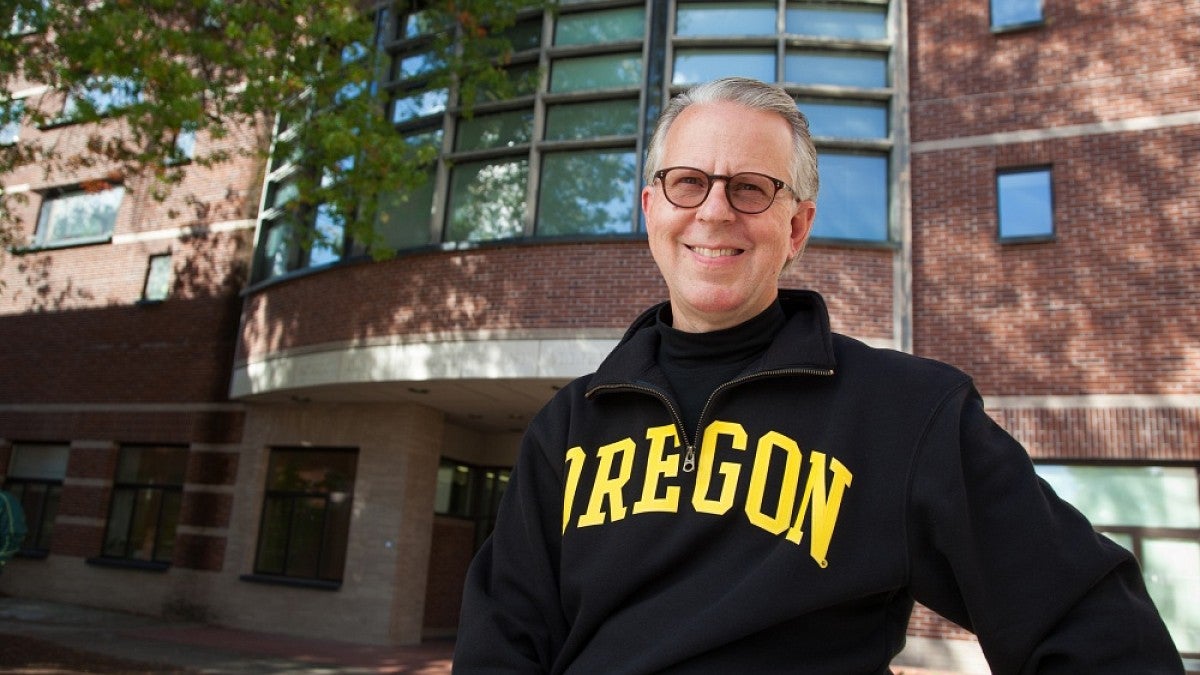Jim Rothwell proudly recalls that October afternoon in 1994 when he stood in the stands of Autzen Stadium cheering Kenny Wheaton as he ran a 97-yard interception return against the University of Washington. That historic play saved the game — and eventually led the Ducks to their first Rose Bowl in 37 years.
“The Wheaton Pick symbolized a turning point,” said Rothwell, a 1980 UO graduate in architecture. “But it took more than that. It took donor investments to make UO football a major force. I’d like to make UO’s architecture program a major force too.”
A recent estate pledge from Jim and his wife Mary — an estimated $5 million — is a step in the right direction.
“This was a way to help out in return for what the school gave me,” said Rothwell, who worked 26 years at Callison, then one of the nation’s largest architecture and design firms. Rothwell served as CEO and board president before leaving the firm in 2011. He now lives in Colorado, where he designs homes.
The Rothwells have included a gift in their estate for the School of Architecture and Allied Arts endowment. Most of the contribution will fund a faculty chair in architecture; the rest will support travel scholarships, facilities and a discretionary dean’s fund.
“We’re very grateful for their generosity,” said Christoph Lindner, who started as the school’s dean this August. “Through this generous contribution, Jim and Mary will transform our architecture program. As part of our endowment, their gift will positively impact our school in perpetuity.
“For years, Jim has also been generous with his time as a leader, mentor and ally. His tireless work has improved our school, helped students and advanced the field of architecture.”
Rothwell was a member of the school’s first Board of Visitors, now called the Dean’s Advancement Council, and also served on the university’s Seattle Regional Council. As a mentor, Rothwell shares his expertise and professional experience directly with students through career counseling and portfolio reviews.
During his time at Callison — a Seattle-based firm with offices on three continents and clients such as Eddie Bauer, Amazon, Boeing and Nordstrom — Rothwell led the corporate division. He also spearheaded Callison’s effort to increase its international presence in the Middle East. Rothwell’s most memorable projects include a million-square-foot complex for Microsoft and a four-tower office project in Riyadh’s King Abdullah Financial District.
The foundation of his success, Rothwell said, was the UO School of Architecture and Allied Arts.
“I think the school is one of the best on the West Coast,” he said. “When I ran Callison, the UO would rank consistently on top for the students we would hire. I received a balanced education. The fulcrum between the technical side and the design side was right where it should be.”
In addition to this balanced foundation, Rothwell said, he learned critical thinking — a skill that’s not easy to pick up after graduating from college.
“You can learn computer programs and building codes while you’re a working professional,” he said. “But a university setting is the best place to learn to think critically. The UO does that very well.”
College is also a great time to travel, he said. That’s why the Rothwells designated a portion of their gift to give more students opportunities to study abroad, an experience that Jim missed out on as an undergraduate.
“My friends studied in Italy one summer,” he recalled. “But I couldn’t afford it. They came back with sketchbooks full of wonderful places. I hope that our contribution will give students the opportunity that I missed.”
By increasing study-abroad scholarships, supporting the architecture faculty and helping the school meet critical needs, Rothwell is confident the gift will yield tangible results for years to come.
“It’s a chance to give back, but I also see it as a sustainable investment,” he said. “It will help generations of students, who will hopefully go on to drive architecture to a higher level.”
—By Ed Dorsch, University Communications


